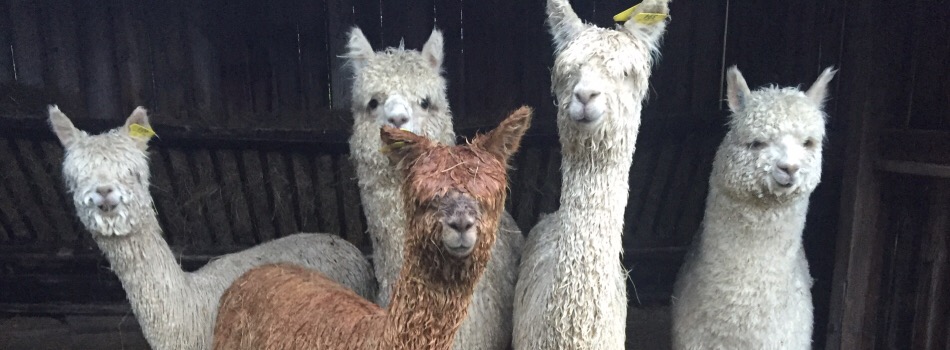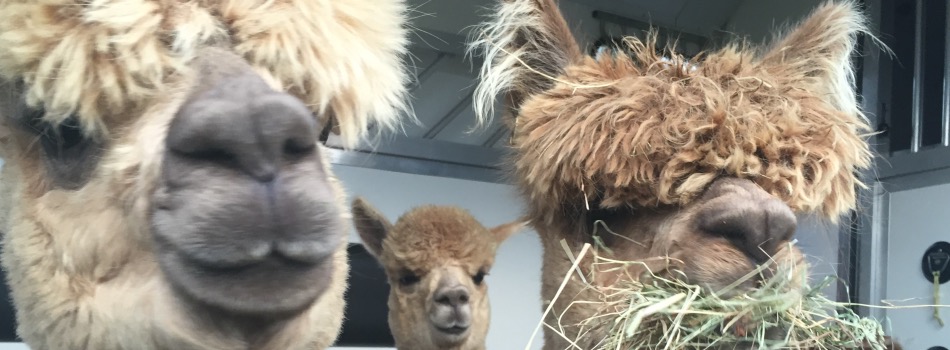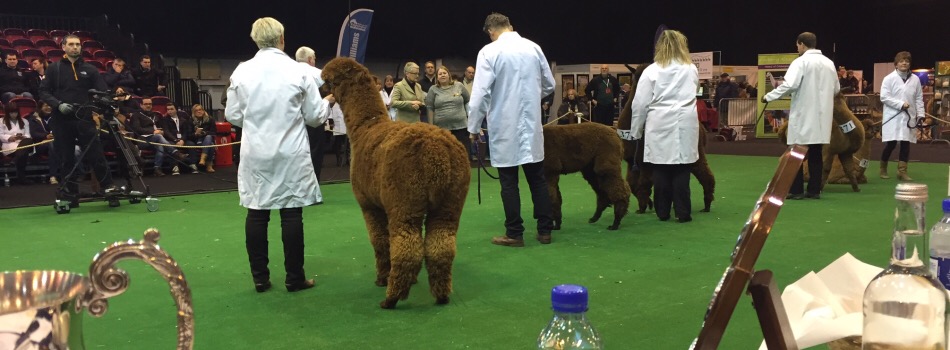ALPACAS WHAT NEXT?
The Alpaca has established a strong and vibrant permanent presence in the UK over the past twenty years. It is currently undergoing the same journey in all the countries of Europe

Peoples enthusiasm for all things alpaca has not diminished since it first arrived on our shores all those years ago and currently all the European countries are following suit as they grow their National Herds. There is no doubt that in the coming years the market place for these magnificent animals will stretch all the way to the borders of Russia and possibly beyond. There have been a couple of thousand alpacas imported into China in recent years and they seem to be heavily investing in the future of this livestock on a scale that has to be taken seriously.
There are only 2.5 million alpacas in South America on average and some years they can lose 250,000 due to their adverse weather conditions. Unless the South American Alapca breeders change their whole political structure and infrastucture in a dramatic way one cannot foresee that there will ever be able to support more than 3,000,000 alpacas in South America, maximum, at any one time. There are now probably around 550,000 alpacas outside of South America and that number is growing exponentially every year. The selective breeding being practiced is moving the standard and quality of the alpaca ahead in leaps and bounds.

Alongside the worldwide expansion of the alpaca there are many breeders like ourselves developing products, creating brands and marketing the benefits of alpaca throughout the major population centres of the world. Collectively the new alpaca breeders in the 'Old World' are creating a demand for alpaca fibre that currently cannot be satisfied a the top level with luxury alpaca fibre.
Alpaca fibre is being included in all sorts of wool products to add an additional level of softness. The coarse alpaca whcih once used to be burnt or take up permanent residence in the shed is being snapped up by the capret manufacturers to enhance the softness of their prodcucts. The 'rubbish' which traditionally was burnt after shearing now returns a value allbeit under £1 a kilo as it is cleaned adn used by various manufacturers for stuffing pillows and duvets.

Undoubtedly there is a growing demand for Luxury alpaca fibre and hence elite and quality alpacas. The next 10-20 years will see the UK alpaca herds shape themselves around the commercial outlets for their fibre. There will be herds that specialise in the production of superfine alpaca. Herds that specialise in quality commercial grade alpaca. In addition we will certainly see the development of commercial fibre herds producing good quality and medium quality alpaca. Alongside this we will also see a developing meat market for these animals as a way of making a return on the alpacas who for whatever reason do not make the grade or have reached the end of their prodcutive lives. The only way of avoiding this will be to ensure that all alpacas bred are quality alpacas produncing sustainable quality fleece that has a viable use right to the end of its days.

At TOFT our aim has been and remains the pursuit of excellence and longevity to grow a sustainable herd that is productive from year 1 until death. However like everything alpaca until someone learns how to interpret those knotted strings remaining in Peru (Quipu) we can only guess at what the past achieved and what the future holds.